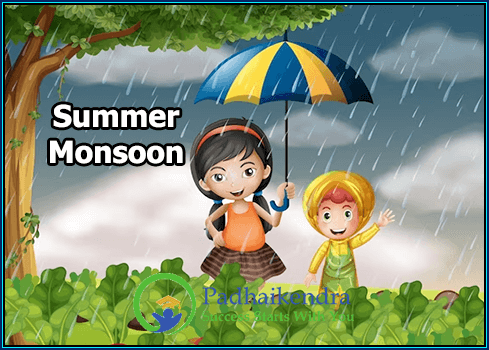The summer monsoon is a weather phenomenon that occurs in parts of South Asia, Southeast Asia, and East Asia. It is characterized by heavy rainfall that occurs during the summer months, typically from June to September. The summer monsoon is caused by a combination of factors, including the seasonal shift in wind patterns, the heating of the land, and the presence of the Intertropical Convergence Zone (ITCZ).
During the summer months, the landmasses in South Asia, Southeast Asia, and East Asia heat up more quickly than the surrounding ocean waters. This causes a low-pressure system to form over the land, which draws in moist air from the surrounding ocean. At the same time, the ITCZ, which is a band of low pressure that encircles the Earth near the equator, moves northward towards the Indian subcontinent. The convergence of these two air masses causes the formation of the summer monsoon.
The summer monsoon is a crucial source of water for many regions in South and Southeast Asia. It provides the majority of the annual rainfall for countries such as India, Bangladesh, and Myanmar, which rely on this rainfall for agriculture and drinking water. However, the summer monsoon can also bring about flooding and landslides, which can have devastating impacts on human lives and infrastructure.
The strength and duration of the summer monsoon can vary from year to year, depending on factors such as the temperature of the land and ocean, the strength of the ITCZ, and the presence of other weather patterns such as El Niño. In some years, the monsoon may be weaker than usual, leading to droughts and water shortages, while in other years it may be stronger, causing widespread flooding and damage.
In conclusion, the summer monsoon is an important weather phenomenon that affects many regions of South and Southeast Asia. It is characterized by heavy rainfall that occurs during the summer months, and it is caused by a combination of factors including the seasonal shift in wind patterns, the heating of the land, and the presence of the ITCZ. The summer monsoon provides much-needed water for agriculture and drinking water, but it can also bring about flooding and landslides. Understanding the dynamics of the summer monsoon is crucial for managing water resources and mitigating the impacts of extreme weather events.





